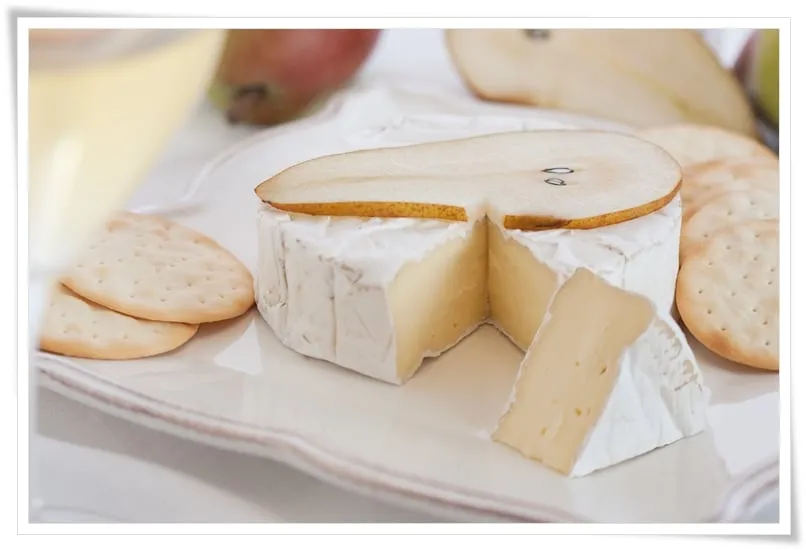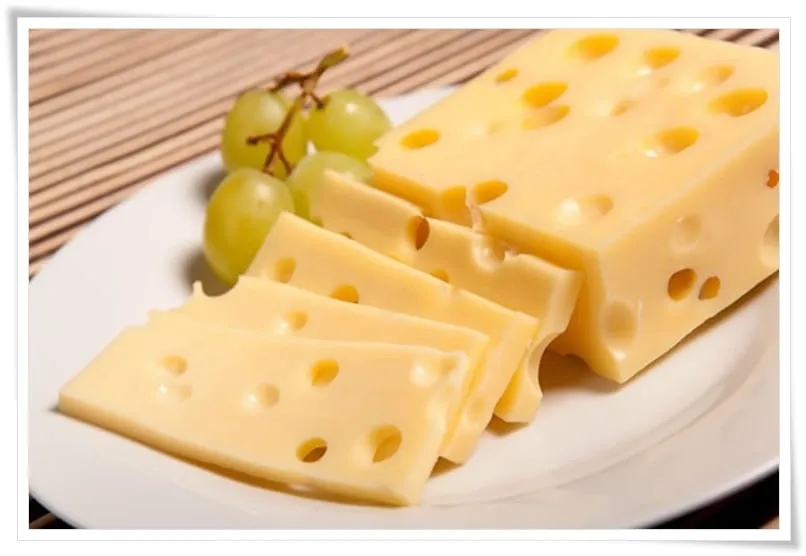Cheese, or “fromage” in French, is an indispensable part of French cuisine, deeply rooted in the country’s culture and history. From peaceful countryside villages to elegant restaurants, French cheese is ubiquitous, with countless varieties and flavors. Have you ever wondered how to distinguish between Brie, Camembert, or Roquefort? This article will be your key to exploring the fascinating world of French cheese, from identification to proper enjoyment.
Brie
Brie is a soft cheese originating from the Brie region of France, with a history dating back to the 9th century. A distinctive feature of Brie is its bloomy white rind, typically made of Penicillium Candidum or Penicillium Camembert. Brie cheese is about 20cm in diameter and is aged for about 4-5 weeks to reach perfect ripeness.
The quality of Brie depends heavily on the milk source and production process. Some fine Bries are aged for up to a year, developing a richer and more concentrated flavor, known as Brie Noir (Black Brie). People in the Île-de-France region often dip Brie in milky coffee and enjoy it for breakfast.
Currently, only two types of Brie are recognized and supervised by the French cheese board: Brie de Meaux and Brie de Melun. These two types are still produced using traditional methods, using fresh, unpasteurized milk to retain maximum vitamins and minerals.
Camembert
Camembert is a soft cheese, similar to Brie, but smaller in size and with a more distinctive flavor. Camembert originates from the Normandy region of France. Camembert also has a white bloomy rind, but its flavor is more intense and robust than Brie.
Camembert is best enjoyed at room temperature to maximize its flavor. This cheese pairs wonderfully with baguette, fresh fruit, or jam. Some people also like to bake Camembert to melt the cheese, creating a delightful dish.
To distinguish Camembert from Brie, you can rely on size and flavor. Camembert is smaller and has a stronger flavor. Additionally, Camembert often has a more pronounced mushroomy aroma than Brie.
Roquefort
Roquefort is a famous French blue cheese made from ewe’s milk and aged in natural limestone caves in Roquefort-sur-Soulzon. Roquefort’s hallmark is the blue or green veins running through the cheese, creating a spicy and salty flavor profile.
The aging process for Roquefort lasts at least 5 months, under the stable temperature and humidity conditions of the caves. This unique environment is what gives Roquefort its distinctive flavor.
Roquefort is often used in salads, sauces, or served with bread and wine. The strong flavor of Roquefort might be unfamiliar to some, but once you acquire a taste for it, it’s hard to forget.
Comté
Comté is a French hard cheese made from cow’s milk and aged for an extended period, from 4 months to over 3 years. Comté has a complex and rich flavor that evolves with aging.
Comté can exhibit flavors ranging from fruity and nutty to caramel and spicy. This cheese is often enjoyed on its own, grated over dishes, or used in baked goods.
To assess the quality of Comté, you should pay attention to its color, texture, and flavor. High-quality Comté will have a deep yellow color, a smooth texture, and a complex flavor.
Emmental
Emmental is a Swiss cheese (though very popular in France) made from cow’s milk, famous for its characteristic large holes. This cheese has a pale yellow color, a slightly sweet and tangy flavor. The minimum aging period is 4 months.
Emmental melts easily, making it a popular choice for soups, grilled cheese sandwiches, or sandwiches. Westerners also enjoy Emmental with fresh fruit.
Distinguishing French Cheese by Flavor and Use
To make it easier to choose and use French cheese, you can refer to the following table:
| Cheese Type | Flavor | Application |
|---|---|---|
| Brie | Mild, creamy | Enjoy directly, bread, fruit, baking |
| Camembert | Rich, intense | Enjoy directly, bread, fruit, baking |
| Roquefort | Spicy, salty | Salads, sauces, served with bread and wine |
| Comté | Complex, rich (varies with aging) | Enjoy directly, grated over dishes, baked dishes |
| Emmental | Slightly sweet, tangy | Soups, grilled cheese, sandwiches, served with fruit |
Tips for Enjoying French Cheese Like a Pro
- Serve at room temperature: To allow the cheese to fully develop its flavor, let it sit at room temperature for about 30 minutes before serving.
- Pair with bread and fruit: Baguette, whole grain bread, fresh fruits (grapes, pears, apples) are excellent choices to accompany cheese.
- Pair with wine: Wine is an integral part of the French cheese experience. Choose a wine that complements the flavor of the cheese to enhance the experience. For example, light-bodied red wines like Beaujolais pair well with Brie and Camembert, while sweet white wines like Sauternes pair well with Roquefort.
- Experiment in dishes: Don’t hesitate to experiment with French cheese in different dishes to discover new and exciting flavors.
Conclusion
The world of French cheese is incredibly diverse and rich, with countless fascinating things to explore. Hopefully, this article has provided you with useful knowledge to distinguish between popular French cheeses and enjoy them to the fullest. Wishing you wonderful culinary experiences!


